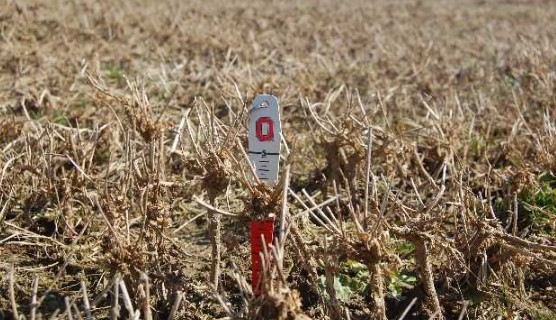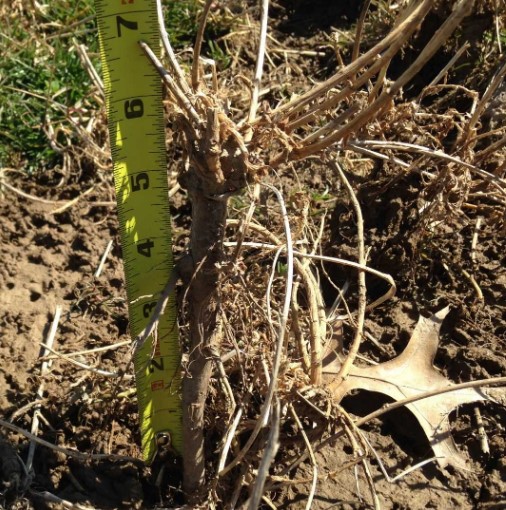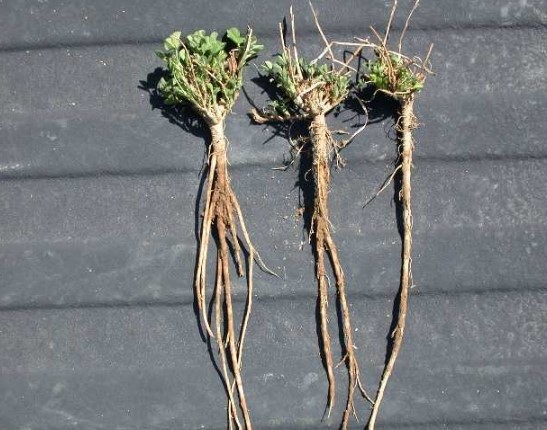By Rory Lewandowski
The winter of 2019 has seen a lot of variability including large temperature swings, snow cover, no snow cover, rain, sleet and ice. One constant for most areas of the state is that soils have remained wet and/or saturated throughout the fall and winter period. Add all of this together and there is the potential for some significant winter injury. Forage growers should plan to spend time assessing winter damage and evaluating the health of their forage stands, particularly alfalfa stands. Assessment and stand health evaluation can begin once plants start to green up and produce 2 to 4 inches of growth.

One of the primary concerns is the possibility of heaving damage. Tap rooted crops such as alfalfa and red clover are particularly susceptible to heaving damage. Conditions that increase the likelihood of heaving are wet, saturated clay soils with high shrink/swell potential, exposed to rapid freeze/thaw cycles. During these conditions plants can be physically lifted (heaved) out of the soil exposing the crown of the plant to possible low temperature damage and/or physical injury from harvest operations. In severe cases the plant can be heaved several inches or more out of the soil, breaking the taproot and killing the plant.

Forage stand health evaluation includes stem counts and digging plant roots. Select random sites throughout the field and evaluate the plants in a one-foot square area. Check at least one site for every 5-10 acres. Increasing the number of random samples provides a more accurate assessment. Begin your stand health evaluation by counting the number of stems per crown. Do this evaluation in at least 4-5 random locations for every 20-25 acres. Stem density counts provide an indication of the yield potential of the stand. The following table is taken from University of Wisconsin Extension publication A 3620; “Alfalfa Stand Assessment: Is this stand good enough to keep?”
Stem number/square foot | Expected result or action |
Over 55 | Stem density not limiting yield |
40-55 | Some yield reduction expected |
Less than 39 | Consider stand replacement |
While you are counting stems, take note of where growth is taking place. Healthy plants have symmetrical, even growth on both sides of the crown. Damaged plants often have more stems on one side of the plant than the other.
While plant and stem counts are useful, to get a true determination of stand health, crown and root tissue should be evaluated to provide an indication of how the plant will hold up to stresses in the coming growing season. This involves digging up plants and splitting the crowns/roots. Dig up five to six plants in those 4 to 5 random locations per 20-25 acres. Split the plant open. A healthy root will have a creamy white color and no to very little discoloration in the crown and taproot. These are the plants that have numerous shoots and the shoots are evenly distributed across the crown of the plant.

Discolored crowns and roots indicate a plant health problem. They are a darker white, tending towards a tan color. There may be obvious areas of root rot and crown rot that are dark brown to black in color. There may be streaks of brown running down the root. These plants typically have fewer stems coming out of the crown and those stems may tend to be more numerous on one side of the crown as compared to the other. Generally, these plants green up in the spring of the year and appear productive, but because of their compromised root system, they may not survive the entire production year, especially if we have a hot, dry year.
In general, if more than 30% of the split roots have brown streaks running down the root and/or black areas of root/crown rot that cover greater than 30 to 50% of the roots diameter, then yield potential is significantly reduced. The grower may want to consider alternative production options such as terminating the stand after first cutting and planting to corn for silage or possibly to a warm season annual forage crop such as sudangrass or a sorghum x sudangrass. The previously mentioned University of Wisconsin publication has a root health rating system along with color photo illustrations that can be used to make a root health assessment (
https://fyi.extension.wisc.edu/forage/alfalfa-stand-assessment-is-this-stand-good-enough-to-keep/).
Taking the time to assess the extent of winter injury to forage and to do a stand health evaluation will allow the grower to determine the yield potential of the stand and whether or not the stand needs to be replaced at some point this year.
Source:osu.edu